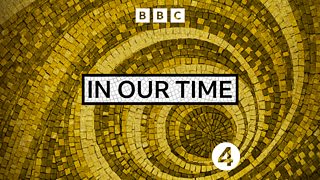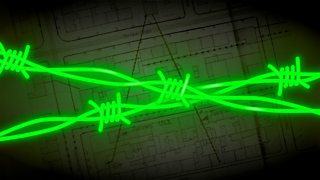10 Things You Might Not Know About Adolf Hitler and the Nazis
A major new drama by Jonathan Myerson – Nazis: The Road to Power – charts how, between 1919 and 1933, Adolf Hitler took over a fringe sect with less than a hundred members and outlandish ideas to become the dominant force in German politics.
The road was anything but straightforward, packed with brazen luck and barely-credible moments. The story is also full of warning signs about manipulation, intimidation, negligence and sheer brute aggression that remain highly relevant today.
Here are ten things that you might not know about Hitler and the Nazi Party.
Listen to Nazis: The Road to Power
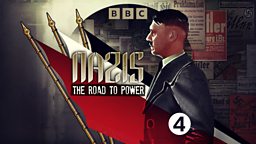
This new scripted podcast takes listeners into the intrigues, the personalities, the knife-edge decisions which would ultimately lead to forty million dead in the greatest catastrophe in the history of the world. Listen to all episodes.
1. Hitler was an unlikely leader
Born in Linz in Austria, and raised by a violent father, Adolf Hitler left home at 18 , determined to become an artist in Vienna. After his second rejection from the Vienna Academy of Fine Art, he decided to try his luck in Munich.
Eking out a meagre inheritance, he lived in men’s shelters and painted postcards to fill the frames being sold in art shops. The outbreak of war ‘rescued’ him: he immediately enlisted in the German Imperial Army and survived all four years in trenches, mostly as a dispatch runner. Never deemed suitable for promotion, he won the Iron Cross First Class – recommended by his (Jewish) commanding officer.
Born in Linz in Austria, and raised by a violent father, Adolf Hitler left home at 18, determined to become an artist in Vienna.
2. Hitler jumped on the Anti-Semitic bandwagon
Hitler later claimed that he had been repulsed by the Jews on the streets of Vienna but there is little evidence for this. And when he first moved to Munich, he rented a room in Jewish-owned house and happily sold his postcards to Jewish art dealers.
But, asked to make speeches to his fellow troops, he quickly found that this line of attack was something which easily roused his audiences – many Germans were looking for someone to blame. And as early as September 1919 he wrote officially to a fellow soldier, making the case for ‘rational antisemitism’ and the removal of all Jews from Germany – less than half of one percent of the population.
3. Hitler was a film and opera obsessive
A huge fan of movies, Hitler would often stay up late and watch foreign films and even draw his favourite Disney characters. At the time he became Chancellor, his favourite film was Der Rebell (The Rebel), a 1932 German production about the people of the Austrian Tyrol rising up against Napoleon’s occupation. Hitler watched the film twice that month, particularly inspired by the lead character sacrificing his life for the cause.
Hitler was also a huge opera fan. He was passionate about Richard Wagner’s operas because of the German ideology associated with the composer’s opus. In his early days in Vienna, Hitler attempted to write his own opera, Wieland der Schmied (Wayland the Blacksmith), in 1908, aged 20. It was never performed but the sheet music has been displayed in Austria as part of an exhibition about the dictator’s early life.
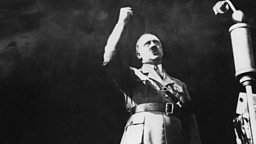
4. The Nazi Party started out as an occult group
After the First World War, Hitler helped the German army lecture soldiers on “the dangers of Bolshevism”. In this role, he ended up being ordered to join the far-right German Workers Party (DAP). The party had sprung from the Thule Society, a semi-Masonic, semi-occult group formed in Munich that took its name from a mythical northern island, Ultima Thule, reputedly the home of "The Nordic Race".
There are countless times in the Twenties and early Thirties when the Nazis’ political ambitions could have been foiled.
The group’s aim was the renewal of the "Teutonic Nation", essentially to restore German pride. Although it was a tin-pot operation with a tiny membership, the DAP promoted many of the ideological prejudices – including antisemitism – ready for Hitler to exploit through populism and nationalism. It also devised imagery that the Nazi Party would later appropriate, namely the swastika and the greeting "Heil und Sieg".
5. Mussolini got there first
Because of the scale of the Nazi empire, it’s often forgotten that, politically, Mussolini had achieved (nearly) everything Hitler wanted over a decade before him. Mussolini’s Fascists took power in Italy in 1922 after the coup d’état which he reframed as "The March on Rome". The Beer Hall Putsch of 1923 was the Nazi Party’s – incompetent – attempt to imitate this and bring about a national (and nationalist) government based in Munich.
The Nazis also emulated the Fascists with their salute, with both groups appropriating an Ancient Roman greeting. Hitler later maintained that the salute dated from the Reformation, but this is likely to have been an attempt to distance any idea that the Nazi Party was following any examples set by others.
6. The Nazis could have failed on many occasions
There are countless times in the Twenties and early Thirties when the Nazis’ political ambitions could have been foiled. They were constantly challenged by fluctuating electoral fortunes and by dire finances, from which they were rescued by wealthy business leaders such as Edwin Bechstein and his wife Helene. In turn, this apparent vulnerability meant that the German establishment failed to take the Nazis seriously, which, for instance, led to the lenient sentencing for the Beer Hall Putsch.
While the Nazis rode their luck, Hitler’s own life hung in the balance during his road to power, as indeed was the case for much of his life. When the police opened fire at the end of the Putsch, Nazi member Max Erwin von Scheubner-Richter, marching arm-in-arm with Hitler, was struck and killed. Later, with arrest imminent, Hitler raised a gun to his head. He threatened suicide – rather than face failure – on several other occasions.
-
![]()
Introducing Nazis: The Road to Power
A new scripted podcast on the intrigues and personalities of early Nazi party history.
7. The suicide of Hitler’s half-niece was a major scandal
One of the most perilous points for the Nazis centred around the suicide of Hitler’s 23-year-old half-niece, Angela “Geli” Raubal.
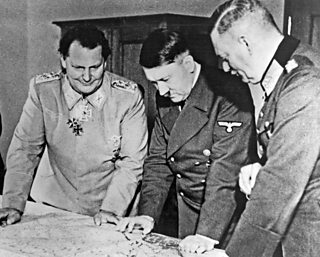
Hitler was extremely possessive of Geli, who lived with her uncle in his Munich apartment. He would never allow Geli to go out alone and he blocked her engagement to his chauffeur and early DAP member Emil Maurice, who was soon removed from this role.
Rumours circulated about the nature of Hitler and Geli’s relationship, with Geli confiding to a friend: “You'd never believe the things he makes me do.” After she took her life in Hitler’s apartment with his revolver, the press was full of the scandal. It was suggested that Geli’s death may not have been suicide.
8. The Brownshirts wore second-hand clothing
The Sturmabteilung (Storm Detachment, known as the SA or "Brownshirts"), the paramilitary wing of the Nazi Party (initially titled as the Gymnastic and Sports Division) was created by former military officer Ernst Röhm, then known as "The Machine-Gun King of Bavaria" for his stockpile of ex-army weaponry. It proved to be both an iron fist to enforce the party’s will and a headache for him when it tried to impose its own agenda.
After one disagreement, Röhm went off to become a travelling salesman in Bolivia. The new Storm Commander, Franz Pfeffer von Salomon, brought in a uniform for the SA which he had located in a warehouse in Austria and had been destined for German troops in East Africa. It consisted of a brown shirt with two breast pockets, a brown tie, a soft brown cap, dark brown trousers and black riding boots.
9. The Nazis turned a blind eye to homosexuality in the Sturmabteilung
The Nazis persecuted gay people when they were in power, but Hitler initially turned a blind eye to the number of high-profile homosexuals in the SA, including its leader Ernst Röhm and his deputy Edmund Heines. He believed that the SA were “fighters not moral arbiters”. Even when Röhm’s homosexuality became public during an election campaign, Hitler stood by him. But in 1934, both Röhm and Heines were top of the list of political assassinations carried out by the Nazis during the Night of The Long Knives.
10. Dachau started as a prison for Communist MPs
Four weeks after becoming Chancellor in January 1933, a fire broke out in the Reichstag, Germany’s Parliament building in Berlin. Hitler immediately blamed the Communists and had their MPs placed in "protective custody", thus allowing him to establish the dictatorship he had long threatened. After the arrests, Heinrich Himmler, leader of the Nazi’s Protection Squadron (SS), announced the opening of a new "Concentration Camp" in a disused gunpowder factory near the village of Dachau, not far from Munich.
Dachau was the first Nazi Konzentrationslager. It initially held a few hundred Communist and Social Democrat politicians but, by the end of the Second World War, over 206,000 prisoners including Jews, Romani, German and Austrian criminals and captured foreign nationals had been imprisoned at the main site and across a hundred sub-camps. 32,000 deaths were recorded.

History on Radio 4
-
![]()
In Our Time: Hitler in History
Melvyn Bragg examines Adolf Hitler and Nazi Germany through historiographical theories.
-
![]()
Nuremberg
The story of the trial of Nazi war criminals following Germany's surrender in 1945.
-
![]()
Tunnel 29
The extraordinary true story of a man who dug an escape tunnel under the Berlin Wall.
-
![]()
The Ratline
Philippe Sands investigates a story of love, denial, a senior Nazi and a curious death.

